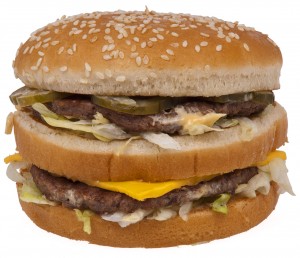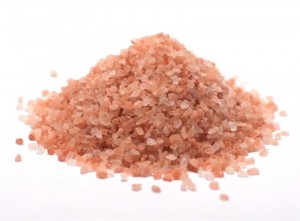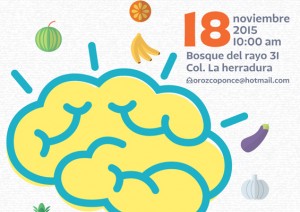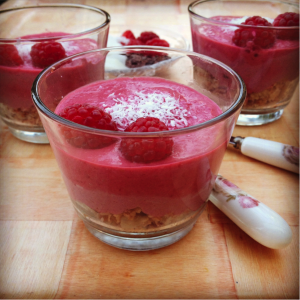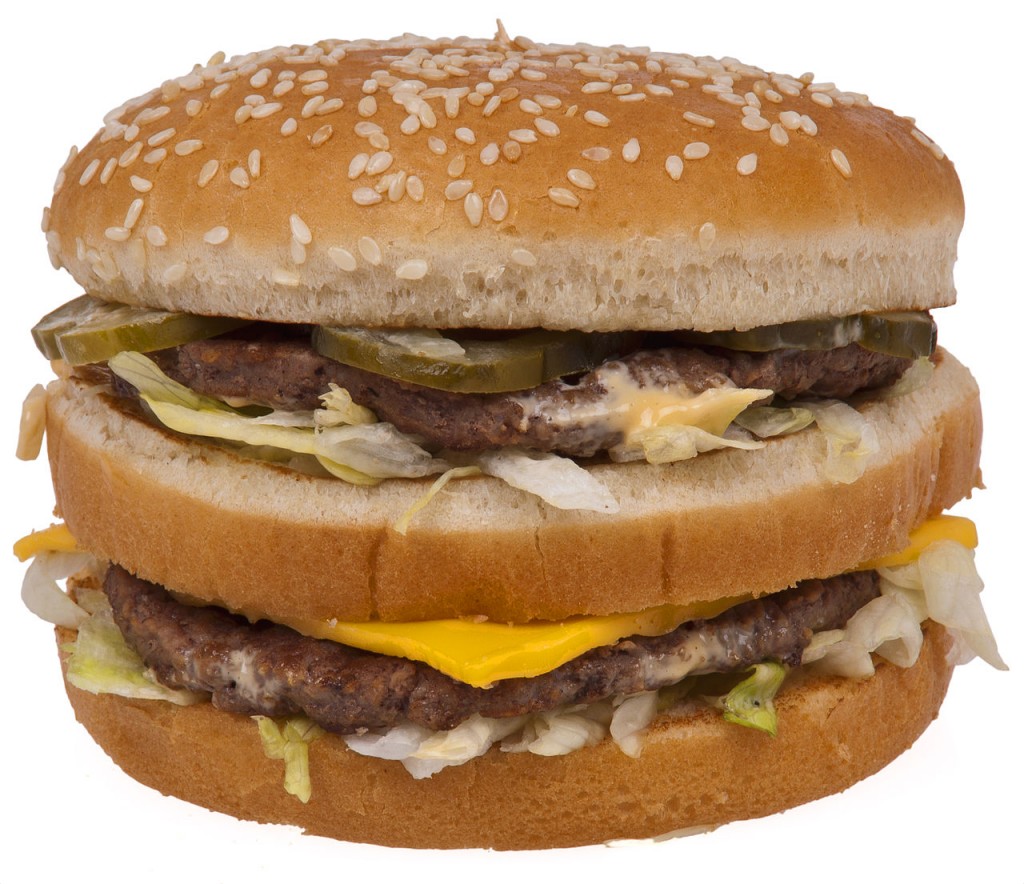
As a follow-up to my article on McDonald’s Chicken McNuggets, I thought I would take a look at the contents of a Big Mac.
In the interests of being fair and balanced, I will acknowledge that the chemicals examined below are likely to be in very minute amounts, below maximum limits set for human consumption by government safety watchdogs like the FDA. However, it is my position that there is no valid reason to eat chemicals that have absolutely no nutritional value, in any amount. And, if you’ve been paying any attention at all to the “fracking” debacle popularized by the movie “Gasland,” you might have a good idea of just how competent government agencies are at protecting you from dangerous chemicals and greedy industry.
According to McDonald’s corporate website, Big Macs contain the following:
100% Beef Patty: 100% pure USDA inspected beef; no fillers, no extenders. Prepared with grill seasoning (salt, black pepper).
Big Mac Bun: Enriched flour (bleached wheat flour, malted barley flour, niacin, reduced iron, thiamin mononitrate, riboflavin, folic acid, enzymes), water, high fructose corn syrup, sugar, soybean oil and/or partially hydrogenated soybean oil, contains 2% or less of the following: salt, calcium sulfate, calcium carbonate, wheat gluten, ammonium sulfate, ammonium chloride, dough conditioners (sodium stearoyl lactylate, datem, ascorbic acid, azodicarbonamide, mono- and diglycerides, ethoxylated monoglycerides, monocalcium phosphate, enzymes, guar gum, calcium peroxide, soy flour), calcium propionate and sodium propionate (preservatives), soy lecithin, sesame seed.
CONTAINS: WHEAT AND SOY
Pasteurized Process American Cheese: Milk, water, milkfat, cheese culture, sodium citrate, salt, citric acid, sorbic acid (preservative), sodium phosphate, artificial color, lactic acid, acetic acid, enzymes, soy lecithin (added for slice separation).
CONTAINS: MILK AND SOY LECITHIN
Big Mac Sauce: Soybean oil, pickle relish [diced pickles, high fructose corn syrup, sugar, vinegar, corn syrup, salt, calcium chloride, xanthan gum, potassium sorbate (preservative), spice extractives, polysorbate 80], distilled vinegar, water, egg yolks, high fructose corn syrup, onion powder, mustard seed, salt, spices, propylene glycol alginate, sodium benzoate (preservative), mustard bran, sugar, garlic powder, vegetable protein (hydrolyzed corn, soy and wheat), caramel color, extractives of paprika, soy lecithin, turmeric (color), calcium disodium EDTA (protect flavor).
CONTAINS: WHEAT, EGG AND SOY
Lettuce
Pickle Slices: Cucumbers, water, distilled vinegar, salt, calcium chloride, alum, potassium sorbate (preservative), natural flavors (plant source), polysorbate 80, extractives of turmeric (color).
Onions: Chopped onions.
100% pure USDA inspected beef; no fillers, no extenders – if you have seen the movie, “Food, Inc.,” I’m sure you will find the claim “100% pure beef” a bit hard to swallow (pun intended). One of my favorite scenes was when they showed mass-produced beef patties, destined for fast food restaurants, being “cleaned” by industrial machinery using ammonia. Though admittedly I cannot say if that particular beef was destined for McDonald’s, this article appears to confirm that McDonald’s uses the “ammonia beef.“
high fructose corn syrup – Increased use of high fructose corn syrup has shown significant correlation to obesity rates according to Princeton University researchers. Obesity is far from the only problem related to high fructose corn syrup and other highly processed forms of corn, the problems of which are worthy of a separate article. I highly recommend the documentary film “King Corn” for more information on today’s industrial corn products.
partially hydrogenated soybean oil – An unhealthy trans fat created through an unnatural chemical process known as hydrogenation which McDonald’s had promised to remove from its foods years ago. This is an example of one of the same trans fats that were banned in so many places due to the substantial health risks associated with them.
ammonium sulfate – The IPCS has a lengthy and detailed 231 page safety study on this chemical. Needless to say there is a lot of data to analyze. Page 4 of the report has a summary of human health effects which seems to conclude that, in specific regard to human health effects, data is lacking.
azodicarbonamide – This chemical has been banned for use as a food additive in Australia, Europe and Singapore where use as such carries a penalty of up to 15 years imprisonment and a fine of up to $450,000 (although the penalties in Singapore are not properly cited). The substance is so toxic the US Government allows it only up to 45 ppm (that’s parts per million) as a food additive.
sodium benzoate – Sodium benzoate is a preservative that has been in the press for a variety of reasons over the years due to concerns of cell damage, cancer (through a reaction with vitamin C resulting in benzene) and hyperactivity in children. A 2007 study at the University of Southampton appeared to confirm the concerns of hyperactivity in children, but the European Food Safety Authority essentially rejected the findings. The risks of sodium benzoate are still up for debate but apparently the emerging research and ensuing controversy was enough for Coca Cola to begin phasing it out of its products.
I can already anticipate one attack on the information provided above, something along the lines of “these ingredients are only included in minute quantities” and “anything will kill you in sufficient quantities, even table salt.” Anything can kill you in sufficient quantities, even table salt. However, table salt provides us with nutrients that are needed by the human body, azodicarbonamide, for example, does not. To the best of my knowledge, none of the chemicals listed above are needed by the body in any quantity. So why eat food that has questionable additives even if the government tells you it’s safe in a small quantity?
If you think you are better off because you live in the EU, think again. While the EU does have slightly stricter standards for food additives than the US, there are still plenty of food additives allowed in the EU. The Independent, a UK newspaper, documented 78 additives currently in use in McDonald’s food in the UK. The article also notes that the number of additives in use in McDonald’s food is increasing rather than decreasing as McDonald’s had pledged in 2007. If you are in the UK, you may be interested in the “Action On Additives” campaign which seeks to reduce or eliminate senseless additives from the food supply that are harmful to children.
I’m currently working in Denmark, in a lovely town called Svendborg. There is a McDonald’s about a 3 minute walk from my hotel. Lots of families with young kids were in there this morning when I passed it – just as there are, I’m sure, in the countless McDonald’s that have sprung up in so many countries around the world. This is not Real Food, folks! Please think about what you are putting into your childrens’ bodies. We are what we eat.
